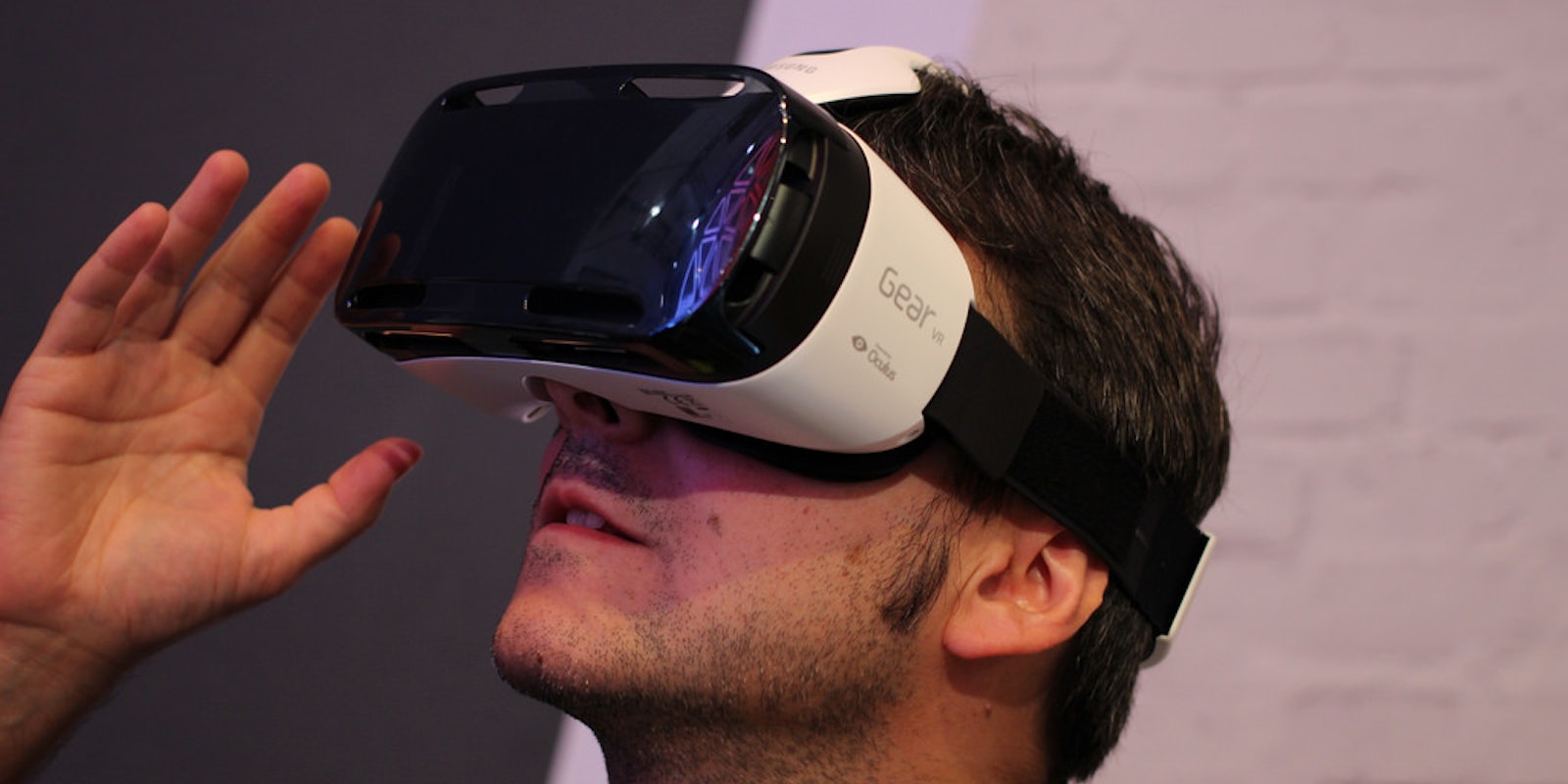Virtual reality is about to get a little more real. A system created by scientists at the University of Bristol will allow you to physically feel 3D virtual objects.
The technology uses sound waves to make what are known as haptic holograms—projected images that can be touched. The sensation is created by emitting high-frequency sound waves from tiny speakers. When a hand comes into contact with the projection, the force from the sound waves is sensed on the skin.
Scientists Ben Long and colleagues stumbled upon the VR breakthrough while working on their UltraHaptics system. Previously it was capable of projecting only 2D outlines. The advancement to fully formed shapes came with the addition of a Leap Motion sensor, which determines the position of a person’s hand in relation to the projected object. With the knowledge of where the hand is located, the UltraHaptics system can direct ultrasound waves with precision and create fully formed objects.
Researchers have used the UltraHaptics system to project several shapes so far, including pyramids and spheres. The level of detail remains limited, though the addition of more speakers would improve the quality of the projections.
The team wants to make virtual reality a more immersive experience—one that moves beyond just sight and sound. A recent study by researchers at UCLA found that the neurons in our brains responsible for space-mapping react differently to virtual reality and the real world. Perhaps the addition of the sense of touch could make virtual reality more recognizable to the brain.
This isn’t the first endeavor attempting to bring touch into virtual reality. A robotic glove uses vibration technology, and there’s another wearable glove that uses haptic responses to simulate touch.
UltraHaptics’ touchable holograms are already getting attention for potential commercial applications. New Scientist suggests that doctors could examine a lump from a CT scan or museums could allow visitors to handle virtual replicas of exhibits on display.
A live demo of the UltraHaptics technology will be given at SIGGRAPH Asia in China on December 3.
H/T New Scientist | Photo via pestoverde/Flickr (CC BY 2.0)


